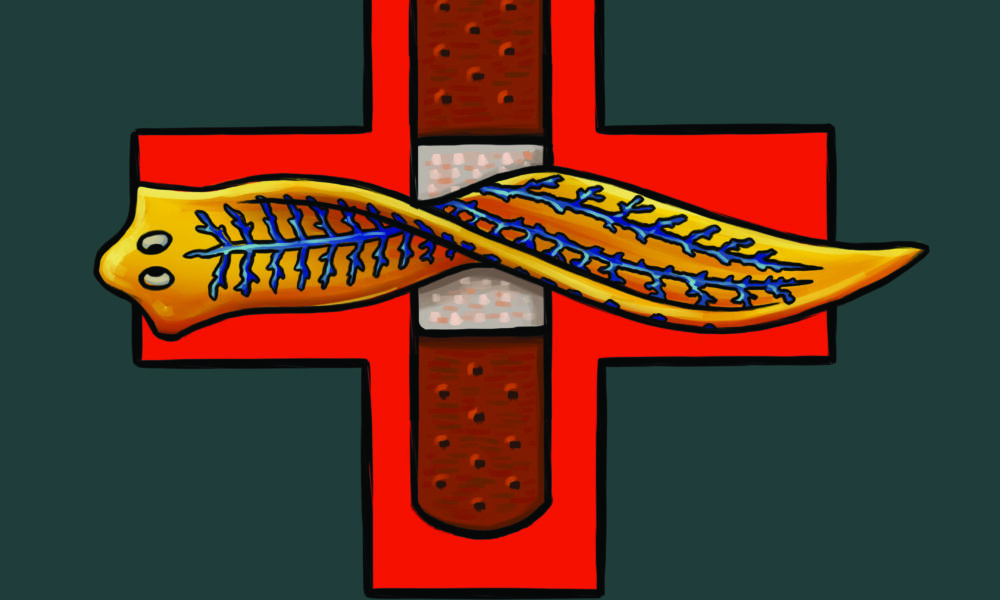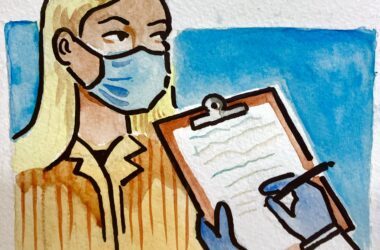Hemorrhages account for about two million potentially avoidable deaths around the world every year. With a 30 to 40 per cent rate of trauma mortality, the impact of hemorrhages worldwide cannot be understated. Yet, a group of researchers at McGill made a remarkable improvement in its treatment by developing bioadhesives derived from structures found in flatworms to efficiently handle pressurized blood flows in non-compressive hemorrhages.
Hemorrhages are caused by blood loss due to damaged blood vessels. The bleeding can be minor, resulting in a bruise, or significant, leading to fluctuations in vital signs and altered mental status. Hemorrhaging can occur outside the body, as a traumatic wound, or inside the body, as internal bleeding. Internal hemorrhages require clinical investigations that include physical examinations, laboratory tests, diagnostic imaging tests, and close monitoring of vital signs.
Various factors can lead to hemorrhaging, such as alcohol abuse, drug use, tobacco consumption, cancer, surgery, or damage to an internal organ. Uncontrolled hemorrhaging leads to decreased blood flow and oxygen supply to organs, which could ultimately result in organ failure, seizures, coma, and death. The treatment for a hemorrhage depends on its anatomical location, the extent of the blood loss, and the patient’s symptoms.
External bleeding can usually be treated by applying direct pressure and placing tourniquets near the wound. However, the treatment of non-compressible hemorrhages, when wound sites are inaccessible, remains challenging. Current treatments, including the use of hemostatic agents (thrombin and kaolin) and bioadhesive sealants, have major drawbacks: They can be insufficiently absorbent and are difficult to store.
Researchers from McGill developed bioadhesives modelled after structures found in marine animals, such as mussels and flatworms, to remedy many of the problems presented by traditional adhesives.
In a new study published in Nature, Jianyu Li, a professor in McGill’s Department of Mechanical Engineering, and his team have proposed the use of liquid-infused microstructured bioadhesives (LIMBs) as an innovative strategy to treat non-compressible hemorrhages.
“These interesting microstructures provide us with a solution to handle heavy blood flows, which is mission-critical in the cases of non-compressive hemorrhages,” Li said in an interview with The McGill Tribune. “They act like a sponge, sucking in the blood at the source of [the] wound, can rapidly induce clotting, and can instantaneously form strong bioadhesion that seals bleeding sites. This new material is mechanically robust and tough to encounter pressurized blood flows and can be instantly removed after surgery.”
As their name suggests, the LIMBs are formed by infusing liquids into a bioadhesive gel called xerogel, which absorbs blood and promotes clotting at bleeding sites. Infused liquids facilitate interfacial bonding and sealing—sticking formed by the intermolecular forces in liquids. The synergy of xerogel and infused liquids allows the bioadhesives to form robust adhesions without having to apply pressure.
Unlike traditional wound closure methods like sutures, wires, and staples, bioadhesives are less invasive and promote wound healing through various mechanisms, such as the release of antibacterial and growth factors, induced host immune responses, and delivery of healthy cells. The bioadhesives possess antibacterial, anti-inflammatory, antioxidant, and self-healing properties, and can remain stable on the site of application due to their intrinsic adhesion property derived from flatworms. These bioadhesives also prevent leakages after surgery, which account for 30 per cent of complications that can easily result in pain, inflammation, infection, and death. LIMBs were validated through both in vitro and in vivo testing using pig models.
The application of LIMBs is quick and pressure-free, making them suitable for non-compressible hemorrhages. Additionally,e LIMBs minimize the risk of re-bleeding upon removal and can be left inside the body to be absorbed.
“Our material showed […] better-improved safety and bleeding control efficiency than other commercial products,” Li said. “Beyond bleeding control, our material could one day replace wound sutures or deliver drugs to provide therapeutic effects and would have important implications in various clinical settings and even the Canadian Armed Forces.”









